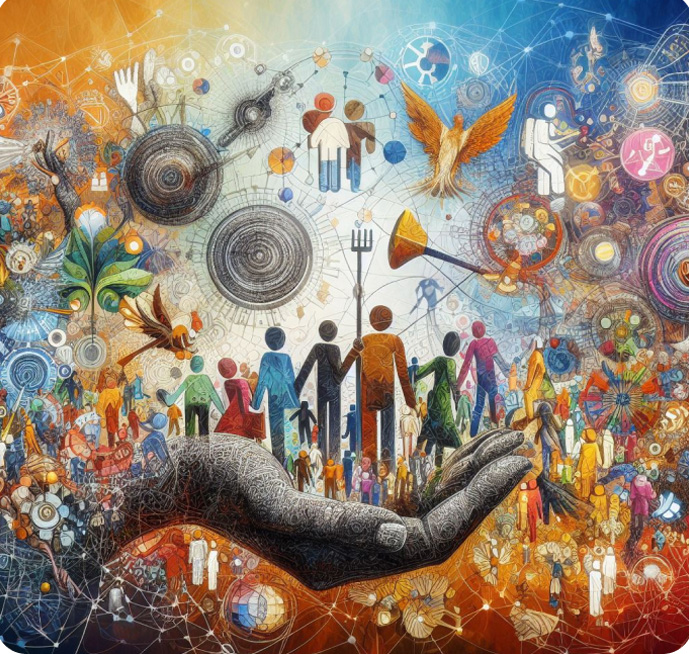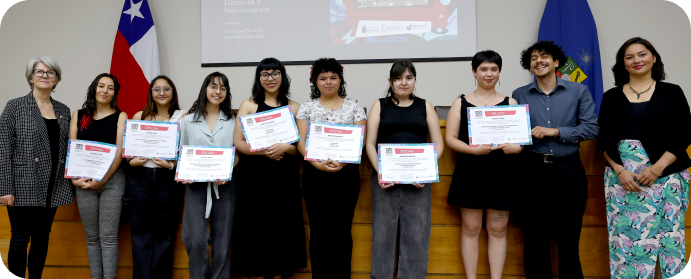At GI-ESCR, central to our mission is generating evidence that challenges inequitable systems and advocates for rights-based policies. Through arts competitions and festivals in Kenya, Colombia, and Chile, we have successfully harnessed the power of creative expression to document lived experiences, amplify marginalized voices, and provide compelling evidence for advancing our vision. These initiatives demonstrate how art, as a medium, can generate tangible and actionable insights to support our broader strategy.
Evidence Generated Through Art
At GI-ESCR, central to our mission is generating evidence that challenges inequitable systems and advocates for rights-based policies. Through arts competitions and festivals in Kenya, Colombia, and Chile, we have successfully harnessed the power of creative expression to document lived experiences, amplify marginalized voices, and provide compelling evidence for advancing our vision. These initiatives demonstrate how art, as a medium, can generate tangible and actionable insights to support our broader strategy.
- In each country, the projects emphasized community-driven narratives, ensuring that rights holders were at the center of the process.
- Workshops, dialogues, and collaborative art-making sessions provided spaces for participants to share and reflect on lived experiences related to access to public services and systemic injustices.
- Local experiences enabled us to show, for example, that in Kenya, the focus on the right to water and environmental sustainability highlighted grassroots struggles with resource allocation and climate justice. In Colombia, artistic contributions explored gender inequality and the challenges of equitable public service delivery in post-conflict regions. In Chile, the competition examined the relationship between public services and human rights, with a special emphasis on education and healthcare access. The thematic parallels also revealed common global challenges, such as gender inequality and environmental degradation, while respecting each country’s unique context.
- Submissions included paintings, performances, installations, and multimedia projects, each serving as qualitative evidence of how systemic inequities manifest in daily life, as well as how people think and frame their lived experiences through diverse media.


- The works generated through the events highlighted systemic failures in public service provision, providing a human-centered narrative that complements data-driven advocacy.
- These narratives can be used in advocacy actions with policymakers and stakeholders, bringing a cultural and emotional dimension to traditional advocacy efforts.
- By prioritizing participation from underrepresented groups, such as women, indigenous peoples, and youth, the competitions ensured that the perspectives of those most affected by ESCR violations were central.
- Artworks created by these groups have been integrated into public exhibitions, amplifying their messages to wider audiences and stakeholders.
- Over 150 students, children and community members across the three countries participated in workshops, submissions, and dialogues.
- Public exhibitions attracted over 1,000 attendees combined, including policymakers, academics, and local leaders, extending the reach of the messages conveyed through art.
- The participatory nature of the events built solidarity among communities, fostering collective action and advocacy efforts.
- In each country, the projects emphasized community-driven narratives, ensuring that rights holders were at the center of the process.
- Workshops, dialogues, and collaborative art-making sessions provided spaces for participants to share and reflect on lived experiences related to access to public services and systemic injustices.
- Local experiences enabled us to show, for example, that in Kenya, the focus on the right to water and environmental sustainability highlighted grassroots struggles with resource allocation and climate justice. In Colombia, artistic contributions explored gender inequality and the challenges of equitable public service delivery in post-conflict regions. In Chile, the competition examined the relationship between public services and human rights, with a special emphasis on education and healthcare access. The thematic parallels also revealed common global challenges, such as gender inequality and environmental degradation, while respecting each country’s unique context.
- Submissions included paintings, performances, installations, and multimedia projects, each serving as qualitative evidence of how systemic inequities manifest in daily life, as well as how people think and frame their lived experiences through diverse media.

- The works generated through the events highlighted systemic failures in public service provision, providing a human-centered narrative that complements data-driven advocacy.
- These narratives can be used in advocacy actions with policymakers and stakeholders, bringing a cultural and emotional dimension to traditional advocacy efforts.
- By prioritizing participation from underrepresented groups, such as women, indigenous peoples, and youth, the competitions ensured that the perspectives of those most affected by ESCR violations were central.
- Artworks created by these groups have been integrated into public exhibitions, amplifying their messages to wider audiences and stakeholders.
- Over 150 students, children and community members across the three countries participated in workshops, submissions, and dialogues.
- Public exhibitions attracted over 1,000 attendees combined, including policymakers, academics, and local leaders, extending the reach of the messages conveyed through art.
- The participatory nature of the events built solidarity among communities, fostering collective action and advocacy efforts.



Join our mailing list
Get
involved
Get involved
Get involved in our social networks
Help us spread the word about our work with partners globally and locally, to tackle social and economic injustice through a human rights lens.

